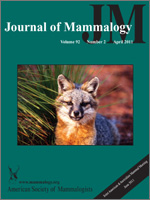Fundamental differences could exist in the fitness-limiting resources between males and females; therefore, movement strategies might differ between the sexes. We used custom-designed animal-borne data loggers to record the locomotor behaviors of free-ranging Malayan colugos (Galeopterus variegatus). Locomotor behavior, and especially gliding, make up a very small percentage of a colugo's time budget. Furthermore, although glide distance is widely variable, most glides are much shorter than the maximum distance achievable. Males perform more glides and travel a greater distance each night than females. Females glide primarily to access foraging trees, but the greater distance traveled by males is from visiting trees to feed and transiting quickly among trees for other behaviors that include territorial defense and mate searching. This study recorded all locomotor behaviors for each animal during the sampling period and provides a starting point for the evaluation of hypotheses for the evolution of gliding and examining the differential effects of selective pressures between the sexes. The evidence suggests that ability to forage in a number of trees each night is an important aspect of the locomotor ecology of colugos and therefore could have played a role in the origins of gliding.
How to translate text using browser tools
15 April 2011
Sex differences in the locomotor ecology of a gliding mammal, the Malayan colugo (Galeopterus variegatus)
Greg Byrnes,
Norman T.-L. Lim,
Charlene Yeong,
Andrew J. Spence
ACCESS THE FULL ARTICLE

Journal of Mammalogy
Vol. 92 • No. 2
April 2011
Vol. 92 • No. 2
April 2011
accelerometer
arboreal mammal
biologging
Colugo
locomotion




